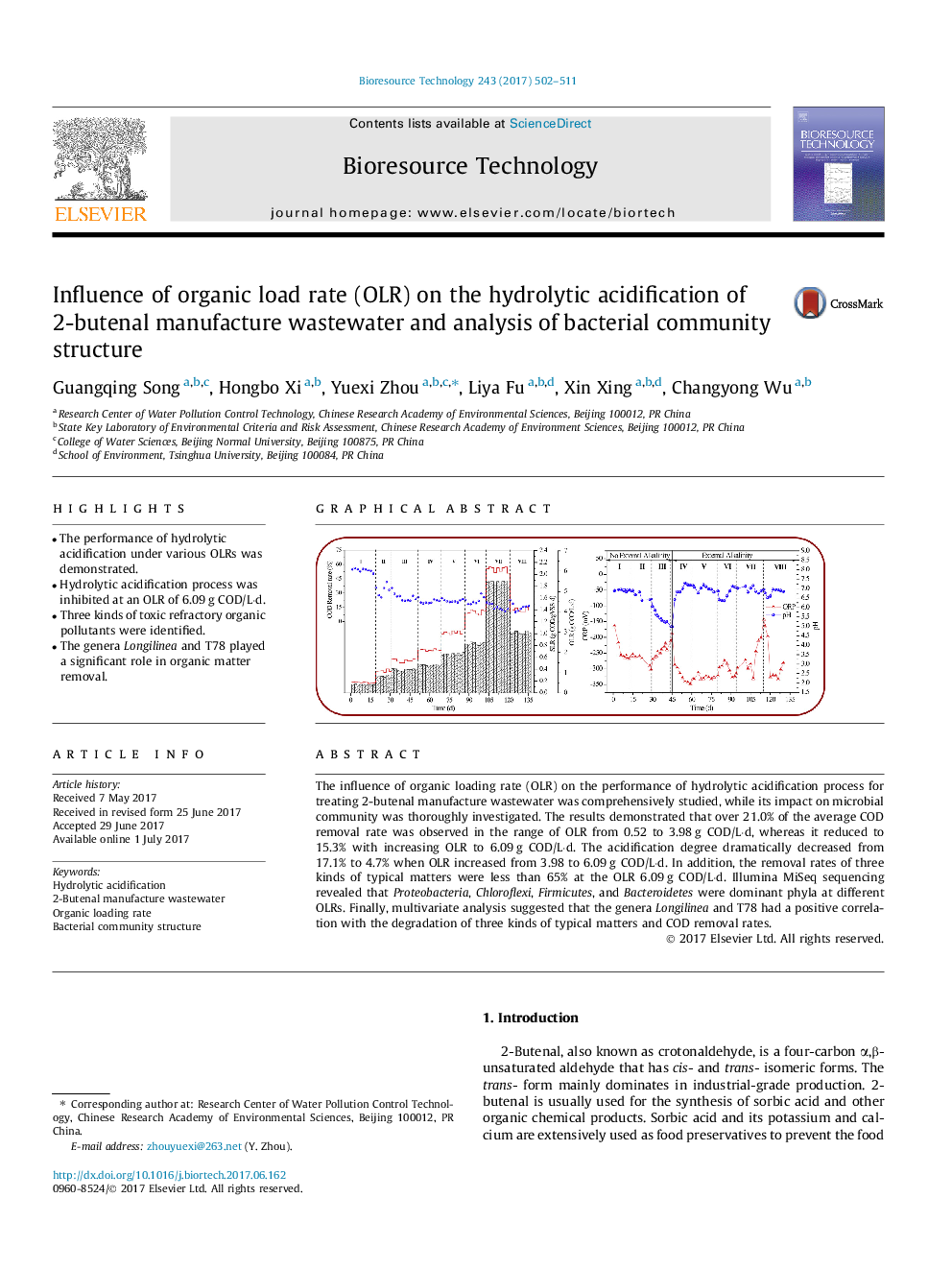| کد مقاله | کد نشریه | سال انتشار | مقاله انگلیسی | نسخه تمام متن |
|---|---|---|---|---|
| 4996870 | 1459900 | 2017 | 10 صفحه PDF | دانلود رایگان |

- The performance of hydrolytic acidification under various OLRs was demonstrated.
- Hydrolytic acidification process was inhibited at an OLR of 6.09 g COD/L·d.
- Three kinds of toxic refractory organic pollutants were identified.
- The genera Longilinea and T78 played a significant role in organic matter removal.
The influence of organic loading rate (OLR) on the performance of hydrolytic acidification process for treating 2-butenal manufacture wastewater was comprehensively studied, while its impact on microbial community was thoroughly investigated. The results demonstrated that over 21.0% of the average COD removal rate was observed in the range of OLR from 0.52 to 3.98 g COD/L·d, whereas it reduced to 15.3% with increasing OLR to 6.09 g COD/L·d. The acidification degree dramatically decreased from 17.1% to 4.7% when OLR increased from 3.98 to 6.09 g COD/L·d. In addition, the removal rates of three kinds of typical matters were less than 65% at the OLR 6.09 g COD/L·d. Illumina MiSeq sequencing revealed that Proteobacteria, Chloroflexi, Firmicutes, and Bacteroidetes were dominant phyla at different OLRs. Finally, multivariate analysis suggested that the genera Longilinea and T78 had a positive correlation with the degradation of three kinds of typical matters and COD removal rates.
308
Journal: Bioresource Technology - Volume 243, November 2017, Pages 502-511